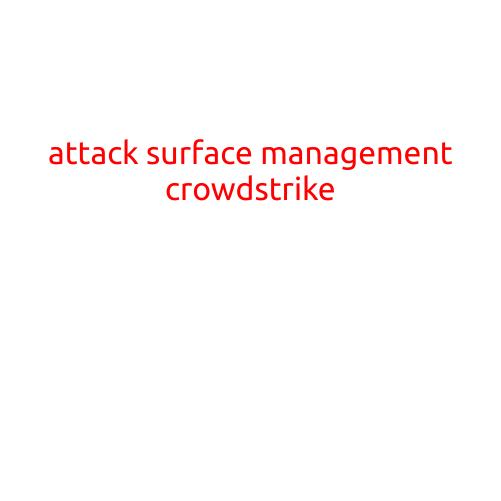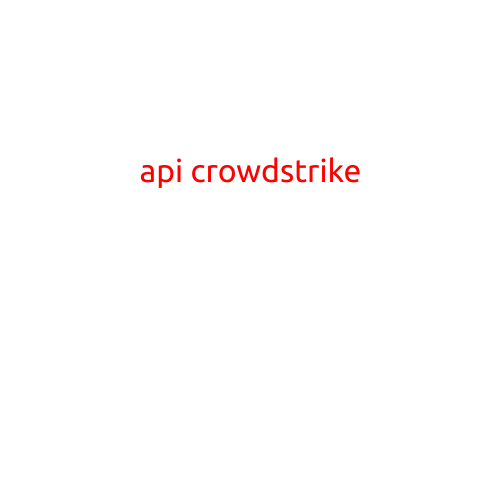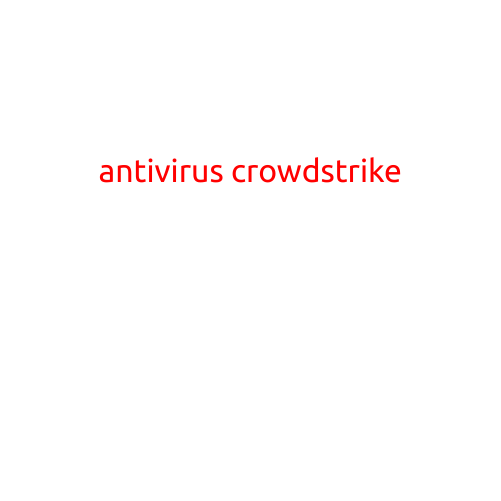
Attack Surface Management with CrowdStrike
In today’s cybersecurity landscape, understanding and managing your attack surface is crucial to preventing and responding to cyber threats. The attack surface refers to the total exposure of vulnerabilities and potential entry points that hackers can exploit to compromise your systems and data. Effective attack surface management involves identifying, prioritizing, and mitigating these vulnerabilities before they can be exploited.
CrowdStrike, a leading provider of endpoint security solutions, offers a powerful attack surface management platform to help organizations of all sizes protect their networks, systems, and data from today’s sophisticated threats. In this article, we’ll explore how CrowdStrike’s attack surface management solution can help you stay ahead of cyber threats and maintain a strong defense posture.
What is Attack Surface Management?
Attack surface management involves identifying, analyzing, and prioritizing vulnerabilities and potential entry points in your network, systems, and applications. This includes:
- Vulnerability Management: Identifying and prioritizing software vulnerabilities, configuration weaknesses, and other security flaws that can be exploited by attackers.
- Network and System Hardening: Implementing security controls and best practices to reduce the attack surface by minimizing potential entry points and limiting attacker movement.
- Endpoint Management: Managing and securing endpoint devices, such as laptops and desktops, to prevent unauthorized access and data theft.
- Detection and Response: Detecting and responding to security threats in real-time to minimize the impact of a breach.
How CrowdStrike’s Attack Surface Management Works
CrowdStrike’s attack surface management solution integrates advanced threat intelligence, AI-powered analytics, and human expertise to identify and mitigate vulnerabilities. The platform provides:
- Vulnerability Prioritization: Prioritizing vulnerabilities based on their severity, criticality, and potential impact to ensure focused remediation efforts.
- Real-time Threat Intelligence: Providing access to real-time threat intelligence feeds to help detect and prevent known and unknown threats.
- Continuous Monitoring: Continuously monitoring network, system, and endpoint activity to identify potential security incidents and detect threats in real-time.
- Automated Remediation: Automating remediation efforts to reduce the time and effort required to patch vulnerabilities and address security issues.
- Integration with CrowdStrike Falcon: Integrating with CrowdStrike Falcon, a cloud-native endpoint protection platform, to provide comprehensive endpoint security and threat hunting capabilities.
Benefits of CrowdStrike’s Attack Surface Management
By using CrowdStrike’s attack surface management solution, organizations can:
- Reduce Attack Surface: Minimize the attack surface by identifying and prioritizing vulnerabilities and potential entry points.
- Improve Threat Detection: Detect known and unknown threats in real-time using advanced threat intelligence and AI-powered analytics.
- Streamline Remediation: Automate remediation efforts to reduce the time and effort required to patch vulnerabilities and address security issues.
- Enhance Incident Response: Enhance incident response capabilities by providing real-time visibility into security incidents and enabling swift response.
- Improve Compliance: Meet compliance requirements by providing detailed reports on vulnerabilities, vulnerabilities, and security incidents.
Conclusion
Attack surface management is a critical component of any cybersecurity strategy, and CrowdStrike’s attack surface management solution provides a powerful toolset to help organizations protect their networks, systems, and data from today’s sophisticated threats. By leveraging real-time threat intelligence, AI-powered analytics, and human expertise, CrowdStrike’s attack surface management solution can help you reduce your attack surface, improve threat detection, streamline remediation efforts, and enhance incident response capabilities.





